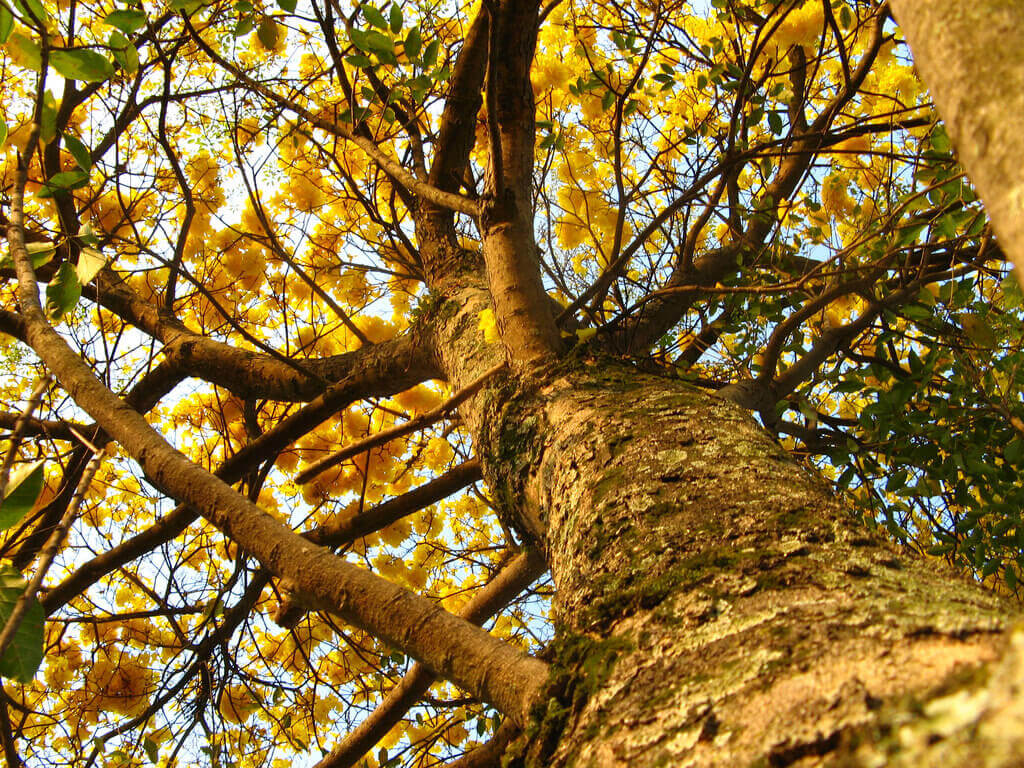Species Profile: Brazilian Walnut (Ipe)
October 14, 2018
“Ipe” or Brazilian Walnut (Ocotea Porosa) is a favorite hardwood flooring option often seen in higher-end decor. Because of its beauty and durability, it’s a dearly beloved hardwood species. Despite the name, it has no relationship to the true Walnut tree — and, that’s just one fun fact. Now, let’s take a closer look at one of our favorite wood species:
- Where does it come from?
- What is it known for?
- Why do homeowners and flooring experts love it?
The Ipe Tree
The Brazilian Walnut tree grows throughout South and Central America, in parts of Mexico, and on a few islands in the Antilles. The name is used to encompass an entire genus of tree, Handroanthus. Handroanthus includes at least 30 distinct species, each called by a different name depending on where they grow. The Ipe tree is the national tree or flower of several countries. It is popular in its native lands for the solid wood it produces and its gorgeous flowers — they look like tiny trumpets.
Just How Durable is Brazilian Walnut?

People love Brazilian Walnut lumber’s density and seeming immunity to the forces of nature. It is so dense that it does not float in water, The wood has a hardness that measures at the very top of the Janka rating scale, upwards of 3,500 (more than 2.5 times the hardness of Oak). It is one of the most durable flooring options available.
Moreover, the wood is so durable that you can leave it unfinished in outdoor settings like saunas, decks, and patio furniture. And, like most woods, it will fade to a brownish-grey color in these circumstances. Still, it has been known to last for more than 25 years this way.
Also, Ipe displays an inherent resistance to rot, mold, and insect damage. And, get this – it rates with steel and concrete concerning fire resistance. There’s no wonder why it is famous for boardwalks and other outdoor communal areas along the East Coast. It can withstand decades of abuse from foot traffic, ocean air, and extreme weather. In the end, it will look hardly the worse for wear.
How Can You Spot Brazilian Walnut Flooring Based on Appearance?
The heartwood of Brazilian Walnut tends to vary in color from reddish brown to a sort of yellowish olive or even darker blackish brown. You may see bundles of boards of various shades sold by hardwood retailers. And, the wood displays a fine to medium texture, with grain varying from straight to irregular or interlocked. Over time, the color will fade somewhat under the sun.

Brazilian Walnut is an oily wood with a moderate luster. Because of this, it is an excellent candidate for natural oil finishes. The inherent oiliness, combined with the wood’s density, make it difficult for a urethane finish to cure properly. Fortunately, its natural durability accommodates as much wear as most polyurethane finishes.
Tip: If you desire extra protection or a certain sheen, choose a factory-finished Ipe over a site-applied finish. The species’ unusual hardness makes it difficult to work with anyway.
Recommended Reading:
What you Need to Know About Prefinished Hardwood Flooring vs Unfinished
How Much Does Brazilian Walnut Flooring Cost?
Because of its exceptional qualities and comparatively scattered growth in the wild, Brazilian Walnut tends to be pricier than many other species. So, you can expect to pay anywhere between $4 and $9 per square feet of flooring. While this may seem steep, you will likely enjoy Ipe floors much longer than if you choose a less expensive species. Of course, this depends on the type of wear and tear you plan to put on your floors or deck.
Why You Must Keep Sustainability in Mind
One potential drawback to Brazilian Walnut is the traditional harvesting practice. Because this species grows sparsely, spread throughout forests — not in tight groves like many domestic species — it was once common practice to clear-cut vast rainforest areas for small harvests, a practice that leads to deforestation. While this sort of clear-cutting is now illegal in most countries, it is crucial to confirm that your Brazilian Walnut flooring originates from a sustainable source.

The Amazon Rainforest, arguably the most devastated natural habitat on the planet, rests at the center of Brazil. Many times, when you hear a term like “Brazilian Walnut,” “Brazilian Cherry,” “Brazilian Maple,” etc., it can reference wood from unsustainable harvesting practices. So, choose a source that grows/ farms trees specifically to create new timber resources. Ask your flooring manufacturer or retailer if they support the Lacey Act, which works against illegal logging practices to ensure the safety of endangered species and ecosystems.
Final Thoughts
To date, Brazilian Walnut flooring remains among the top flooring species used in homes and outdoors. Moreover, it is particularly well-suited to our climate here in Colorado. Many people feel like flooring that will withstand the worst you can throw at it (for decades to come) is worth the extra cost. Then again, it may not be the right choice for you. Are you still trying to make a flooring decision? Let us help you choose the right hardwood flooring for your home and lifestyle.
First published on Nov. 5, 2015.






